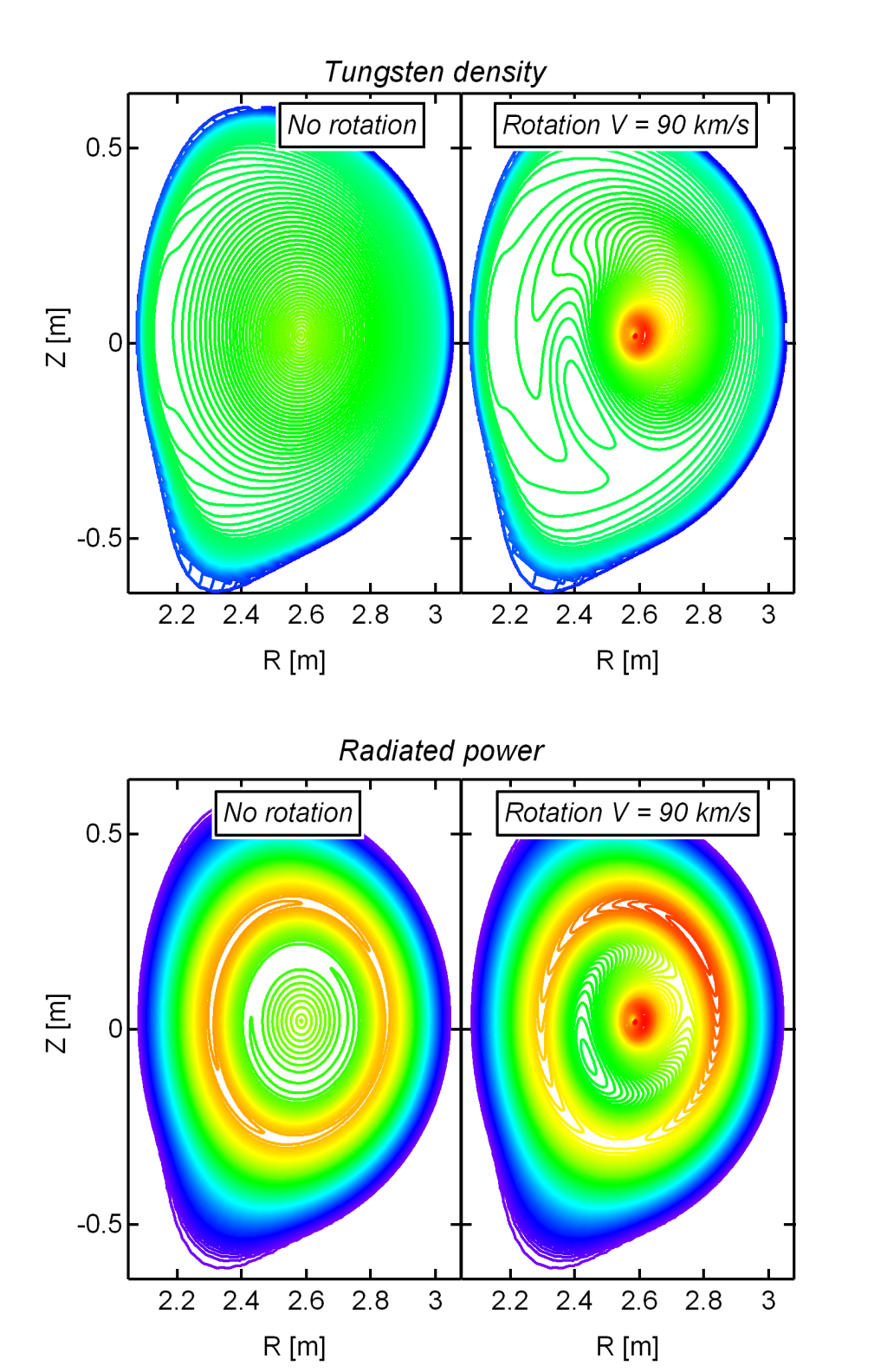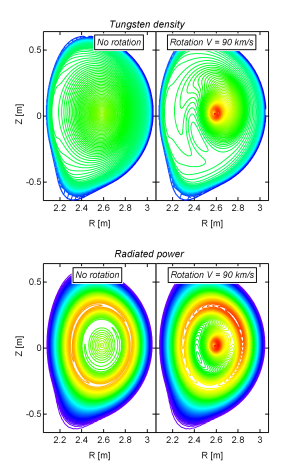Scientists at IRFM are studying the issue of Tungsten atom transport. This material that covers the walls of the tokamak vacuum chamber should not contaminate the plasma. Its accumulation in the plasma core can cause significant radiation losses often observed on the European tokamak JET and on Asdex-Upgrade in Germany. On the WEST tokamak, the rarity of this type of event has been explained.
The operation of a fusion reactor by magnetic confinement imposes strong constraints on the choice of materials that will cope with a plasma heated to several million degrees. They must not only support significant heat flows but also not absorb the radioactive tritium that is part of the reactive mixture. Tungsten, a metal with a very high melting temperature, is suitable for this environment, but it sometimes has a tendency to accumulate in the center of the plasma. It can cause high radiative losses incompatible with the temperature required to maintain nuclear reactions, or even turn off the plasma completely if they exceed the heating power. On the WEST tokamak, unlike many other machines, this accumulation phenomenon is extremely rare: why is it so?
Tungsten, like other particles in plasma, is transported by two channels: a collisional channel and a turbulent channel. The second generally dominates by a lot, but for heavy ions (case of Tungsten), which reach high degrees of ionization at typical fusion plasma temperatures (~10 keV), two mechanisms can make the collisional transport very high: the rotation of the plasma which exerts a centrifugal force proportional to its mass, and asymmetries in the electrostatic potential which exerts a force proportional to the charge of the ions. On many tokamaks, the plasma is heated by injecting beams of neutrals. This heating system generates a large rotation that favours the accumulation of impurities on the external side, due to the centrifugal force. Under usual conditions, the flow of impurities enters from the external side and exits from the internal side of the plasma. Having more impurity on the external side therefore leads to an overall inflow, and to an accumulation of impurities in the centre of the plasma. The problem of their accumulation is thus very significant and has been observed on the JET and Asdex Upgrade tokamaks for example. On WEST, on the contrary, the plasma is heated by Radio-Frequency waves, and its rotation is weak. The situation will be similar in ITER where the momentum created by the neutral beams will be limited because of their very high energy (1MeV). Under these conditions, turbulent transport can remain dominant and Tungsten does not accumulate. This was confirmed by IRFM researchers by computations carried out with turbulence and collisional transport codes applied to the experimental conditions of WEST [Yang 2020], which constitutes an important result for the operation of ITER and the design of future fusion reactors.
As part of this work, an original approach to the evaluation of collisional transport coefficients has been developed and makes it possible to save 6 orders of magnitude on the computation time, with a few simplifications validated by a more complete code [Maget 2020]. This makes relevant its implementation in an integrated plasma evolution simulator, which will be carried out in 2021 as part of a European project. It also facilitates investigations into the few cases of accumulation that remain to be explained, and for which the electrostatic potential is one of the options considered.

Publications :


